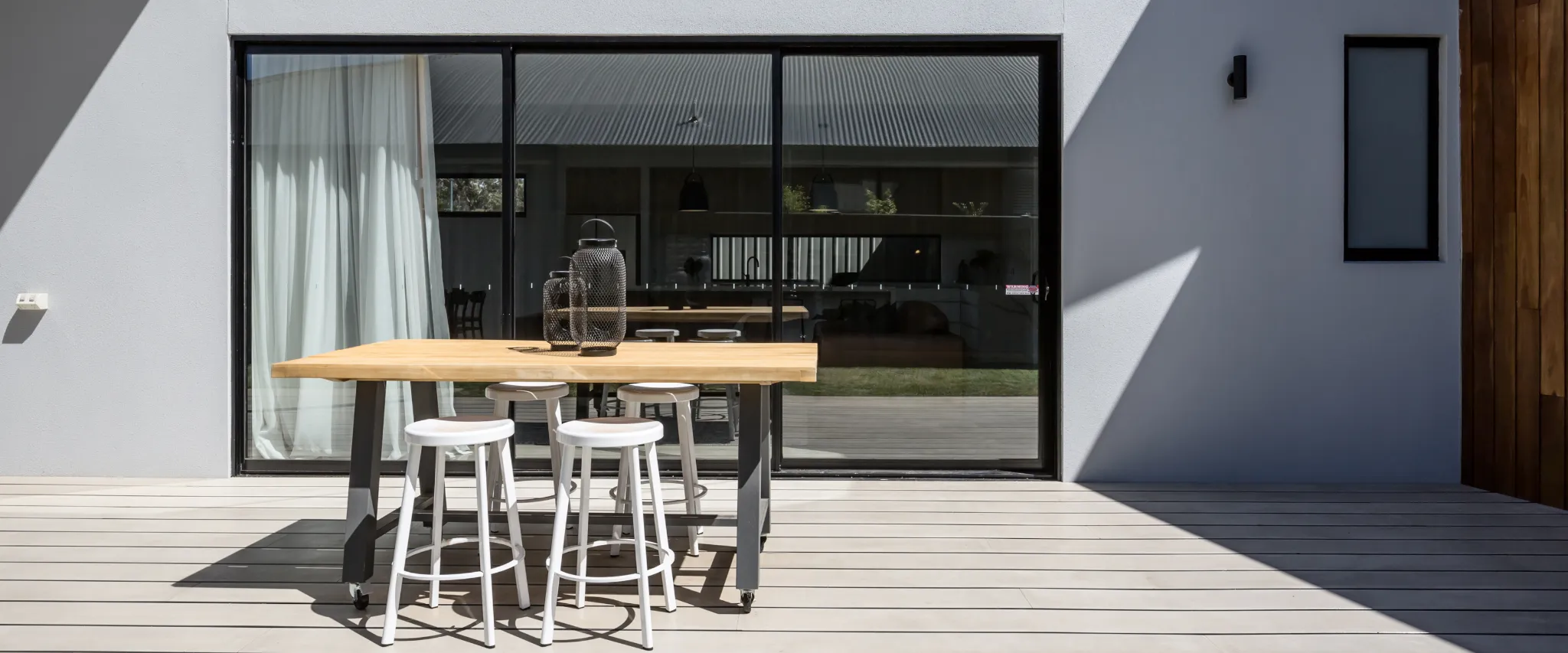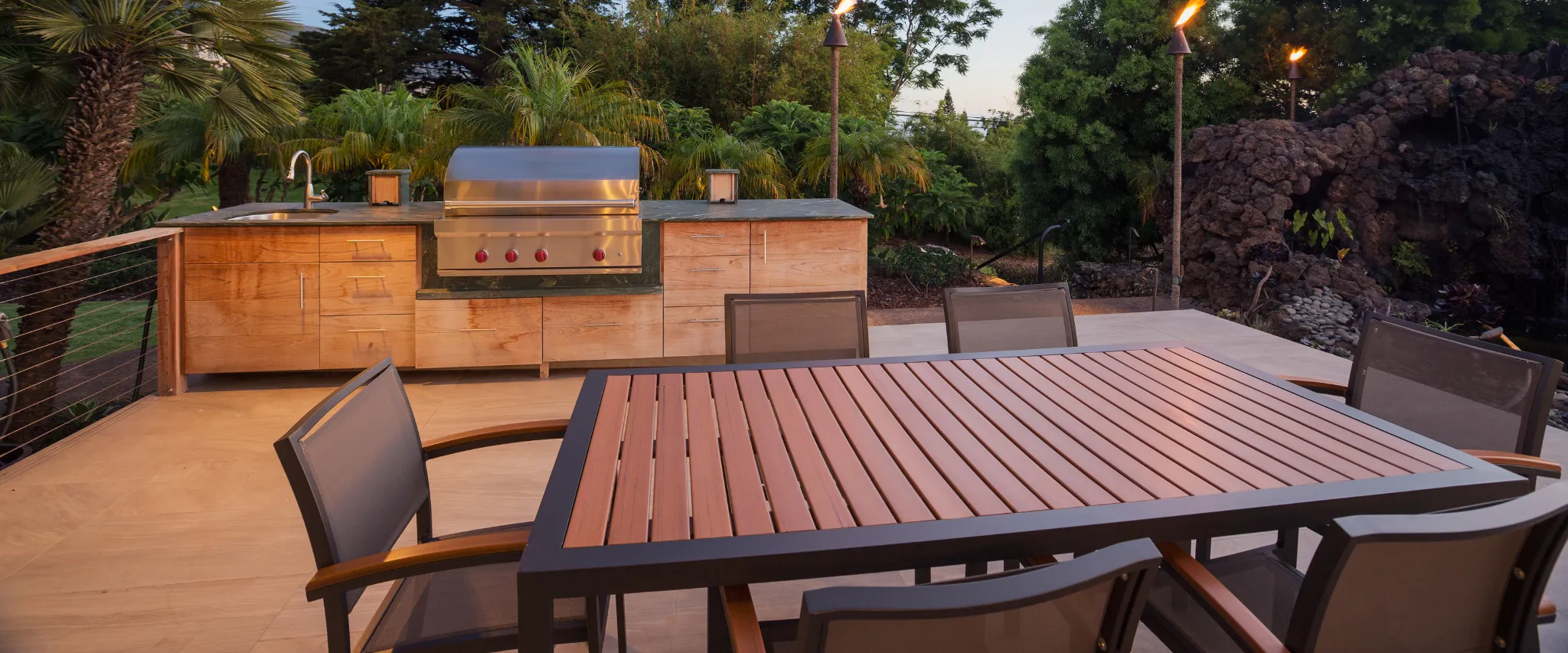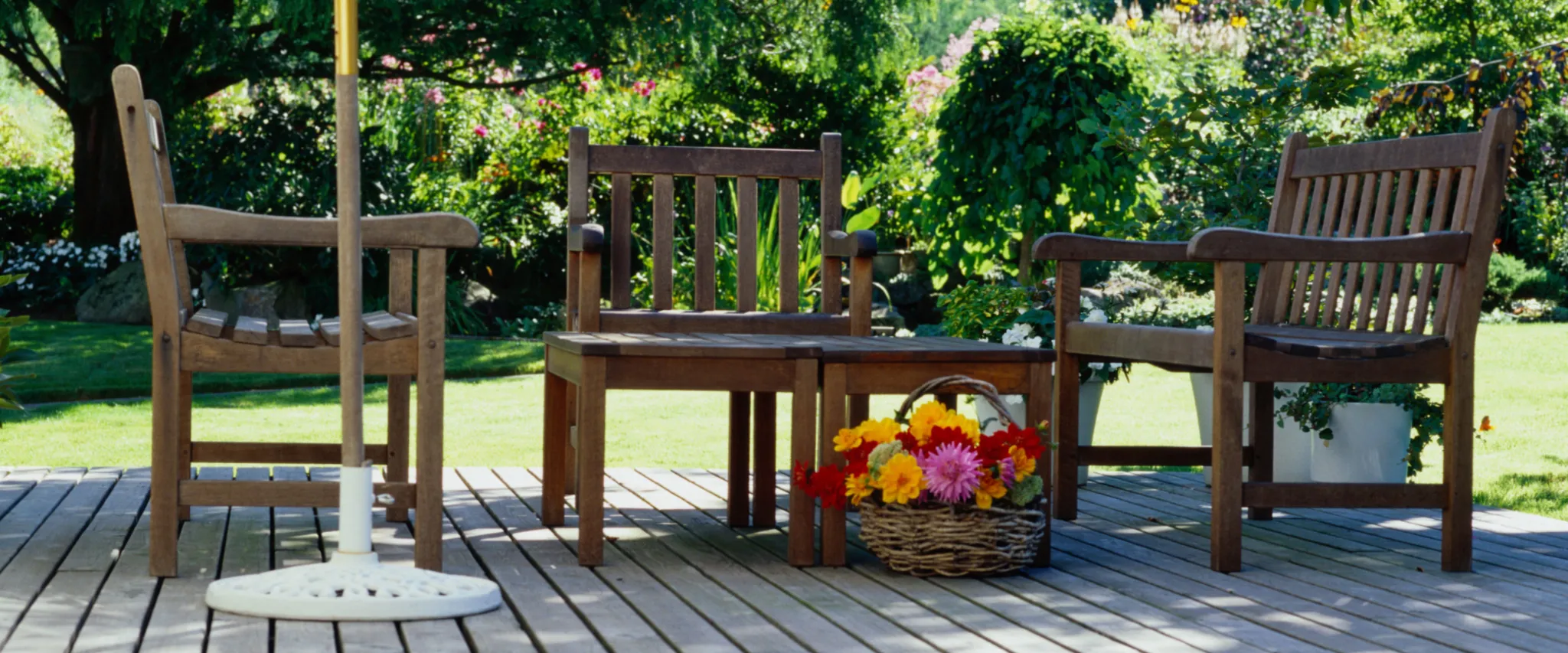Decking Materials for Fire Resistance: What to Know
When you’re deck building or updating a deck, one of the big things to consider is fire resistance. It might sound like a fancy term, but it just means you want materials that hold up well against fire. If you live in a place prone to wildfires, or you just want an extra layer of protection for your outdoor space, picking fire-resistant decking can make a big difference.
Let’s go over the materials out there, talk about how they’re rated for fire safety, and help you find something that’s safe, looks good, and doesn’t break the bank.

Key Takeaways
- Materials like composite decking, fire-retardant treated wood, PVC, and aluminum provide varying levels of fire resistance.
- Aluminum is the most fireproof option, while composite and PVC decking combine aesthetics with safety.
- Regular cleaning, inspections, and occasional re-treatment (for treated wood) are essential to maintaining fire resistance.
- Composite and aluminum decking are low-maintenance and durable, while treated wood requires periodic reapplication of fire-retardant chemicals.
What is Fire Resistance?
Fire-Resistant Decking Materials: What Are My Options?
- 1. Composite Decking
Composite decking is a mix of wood fibers and plastic, making it pretty resistant to fire right from the start. Brands like Trex or TimberTech often have good flame spread ratings, especially in their high-end lines.
- Pros: Durable, low maintenance, and generally good with fire resistance.
- Cons: Can be pricier than wood.
- 2. Fire-Retardant Treated Wood
If you’re set on the look of natural wood, you might want to check out fire retardant treated wood. This wood is treated with special chemicals to help it resist flames.
- Pros: Keeps that natural wood look while adding fire resistance.
- Cons: Over time, it may need to be retreated.
- 3. PVC Decking
PVC decking, another type of synthetic material, is also known for being fire-resistant. Made entirely of plastic, it doesn’t catch fire as easily as untreated wood. Plus, it holds up well against weather, which is a nice bonus.
- Pros: Fire-resistant, super low-maintenance, great for wet or humid areas.
- Cons: Typically higher cost than composite decking.
- 4. Aluminum Decking
For top-notch fire resistance, aluminum decking is practically fireproof. It won’t ignite, and it doesn’t get damaged by high heat. Aluminum decking is more common in commercial spaces but can work for residential decks if you’re focused on fire safety.
- Pros: Excellent fire resistance, durable, easy to clean.
- Cons: Can feel more industrial and isn’t as warm or “natural” looking as wood or composite.
Understanding the Flame Spread Rating
Flame spread rating is just a way to see how materials handle fire. Here’s a quick guide:
- Class A: Slow flame spread, best for fire-prone areas. Composite decking, PVC, and aluminum often fall here.
- Class B: Moderate flame spread. Treated woods usually sit here.
- Class C: Higher flame spread, which means it catches fire easier. Regular wood often falls into this category unless it’s been specially treated.
Are Composite Decking Materials Really Fire-Resistant?
Yes, but it depends on the type. Most composite decking brands make a few product lines with solid fire resistance. For example, Trex Transcend and TimberTech AZEK are both known for being relatively fire-resistant, especially compared to traditional wood decking.
- Why Go Composite?
Composite materials mix wood fibers with plastic, which makes them more resistant to both fire and moisture. While it might not be totally fireproof, it’s often much better than untreated wood.

Can I Have a Fire Pit on a Fire-Resistant Deck?
Good question! Yes, you can often have a fire pit on a fire-resistant deck, but it’s wise to follow a few guidelines:
- Use a Fireproof Mat: Place a fireproof mat under the fire pit to catch any stray embers.
- Mind the Distance: Keep the fire pit a safe distance from railings and the house.
- Choose the Right Type: A propane fire pit is usually safer for decks than a wood-burning one.
Comparing Costs: Fire-Resistant Decking vs. Traditional Wood
Fire-resistant materials tend to be more expensive upfront than traditional wood. But here’s the thing: they’re often more durable and require less upkeep. You might pay more initially, but over time, the lower maintenance costs and better longevity could balance things out. Here’s a quick breakdown:
- Composite Decking: Higher upfront cost, but lasts a long time.
- Fire-Retardant Treated Wood: Mid-range cost, may need re-treatment.
- Aluminum Decking: High cost, but nearly zero maintenance.
Maintenance Tips for Fire-Resistant Decks
To keep your deck in top shape, there are a few things you can do:
- Clean Regularly: Remove leaves, dirt, and other flammable debris.
- Inspect Annually: Look for any damage, loose boards, or areas where the finish is wearing off.
- Keep it Dry: Fire-resistant doesn’t mean waterproof. Make sure water isn’t pooling anywhere on the deck.
Choosing Fire-Resistant Decking Based on Your Climate
When you’re picking decking, it’s helpful to think about your local climate. While fire resistance is essential, other weather factors can play a big role in how well your deck holds up.
- Hot and Dry Climates: If you’re in an area with lots of sun and heat, like the Southwest, composite decking and PVC decking are great choices. They resist fire well, and they won’t dry out or crack the way natural wood can under strong sun.
- Wet or Humid Areas: For rainy climates or places with high humidity, think about aluminum decking or high-quality composite materials. Wood, even when treated, tends to absorb water over time, which can make it swell or warp. Aluminum doesn’t absorb water at all, and composite holds up much better than natural wood here.
- Freezing Winters: If you live in a place with long winters, the freeze-thaw cycle can be tough on some materials. Composite decking is a solid choice in this case because it’s less likely to crack or split in the cold.
Add-On Features for Extra Safety
Beyond the material itself, a few simple features can make your deck even safer.
- Non-Flammable Railings: Many decks use wood railings, but if you’re aiming for high fire safety, try metal railings. Aluminum or steel railings resist fire better and give your deck a sleek, modern look.
- Fireproof Mats: If you like to grill on your deck, a fireproof mat under your grill can catch stray embers or grease splatters, reducing the risk of fires.
- Self-Closing Gate: Installing a self-closing gate can help contain any fire hazards on your deck. It’s a nice feature for families with kids and pets, too.
- Planters with Gravel or Rocks: Instead of wooden planters or mulch, consider adding planters filled with gravel, rocks, or succulents around your deck. These are fire-resistant, and they add a unique look to your outdoor space.
Fire-Resistant Deck Maintenance: Keep it in Top Shape
Keeping your fire-resistant deck in good condition is key to making it last longer and stay safe. Here are some tips for easy maintenance:
- Clear Away Debris: Make it a habit to sweep leaves, sticks, and dirt off your deck regularly. Organic debris can dry out and become flammable, which isn’t ideal even on a fire-resistant surface.
- Wash It Down: At least once a year, give your deck a good wash. Use mild soap and water or a cleaner recommended for your deck type. This not only keeps it looking fresh but also helps prevent buildup that could be a fire hazard.
- Inspect for Wear: Check for any worn spots, loose boards, or exposed screws. Even fire-resistant materials can show wear, and staying on top of small repairs will help keep your deck safe.
- Keep Furniture Safe: If you have outdoor furniture, make sure it’s weather-resistant and fire-resistant. Metal or stone tables, rather than wood, help avoid extra fire risks.
How Fire-Resistant Decking Holds Up Over Time
One thing to keep in mind is that even fire-resistant decks need some care to stay in top shape. Here’s a look at how some of these materials age:
- Composite Decking: Composite decks generally hold up well over time. They resist fading and splintering, but high-end composites fare better under intense sun and heat. With regular cleaning, composite decks stay looking good for years.
- Aluminum Decking: Aluminum is extremely durable and doesn’t warp, rot, or fade over time. Plus, it’s resistant to rust and pests, making it a low-maintenance option. Just clean it now and then, and it will look as good as new.
- Fire-Retardant Wood: Treated wood can last a long time if maintained properly, but it might need to be re-treated every few years to keep its fire-resistant qualities. Be sure to inspect it often to ensure there’s no chipping or peeling that could make it less safe.
Fire Safety Tips for Deck Owners
Even if your deck material is fire-resistant, you’ll still want to take precautions for added safety. Here are some quick fire safety tips:
- Keep an Eye on Open Flames: If you’re using a grill, fire pit, or outdoor heater, never leave it unattended. Place any flames at a safe distance from your house and any flammable items.
- Store Firewood Away: If you keep firewood around for a fireplace or fire pit, store it away from your deck. Even fire-resistant decks can catch fire if they’re in close contact with highly flammable materials.
- Use Outdoor-Rated Lights and Cords: If you like to add lights or outdoor heaters, make sure they’re rated for outdoor use. Some indoor cords and lights can be fire hazards if exposed to moisture or rough weather.
Considering Budget: Fire-Resistant Decking Costs
Fire-resistant materials are generally more expensive than standard wood decking, but many homeowners find it worth the cost. Here’s a quick overview:
- Composite Decking: Mid to high-end in price, depending on the brand and type. Composite materials may cost more upfront, but they save on maintenance costs over time.
- PVC and Aluminum Decking: These tend to be on the higher end of the price range but are very durable and nearly maintenance-free.
- Fire-Retardant Wood: This can vary widely in cost depending on the type of wood and treatment. However, you may need to pay for re-treatment down the line.
If you’re on a tight budget, consider looking into mid-range composite options or treated wood. You’ll still get good fire resistance without a high price tag.

FAQs

Ready to Build a Fire-Resistant Deck?
If fire safety is a top priority for your outdoor space, Riverview Decks can help. Our team specializes in designing decks with materials like composite, PVC, and aluminum that prioritize fire resistance while looking amazing. Let us guide you in choosing the best fire-resistant option for your deck building project.
Contact us today at (865) 801-4545, and let’s create a deck that’s safe, stylish, and built to last!

